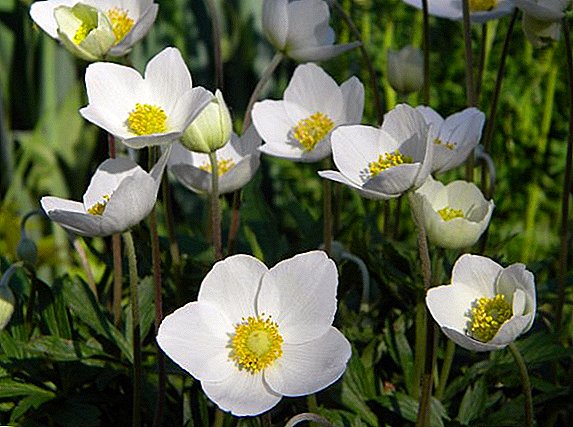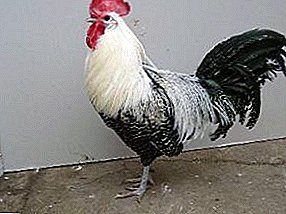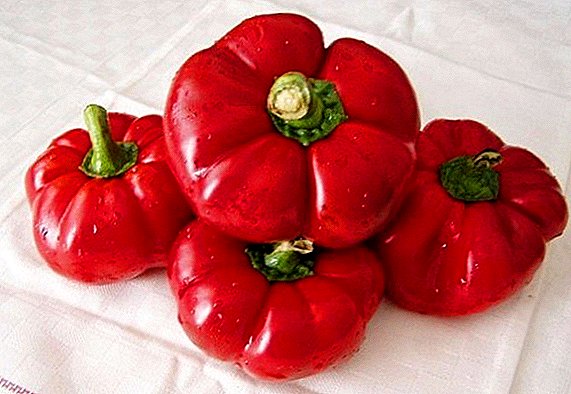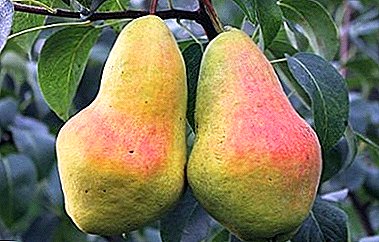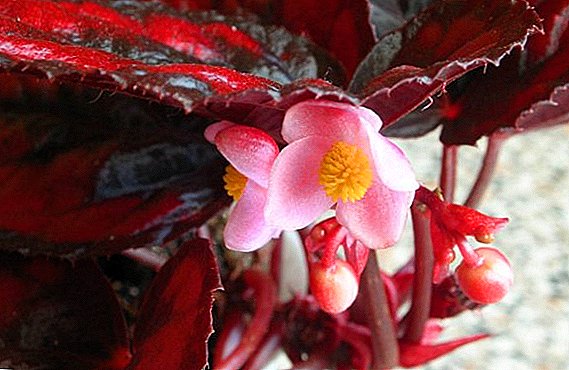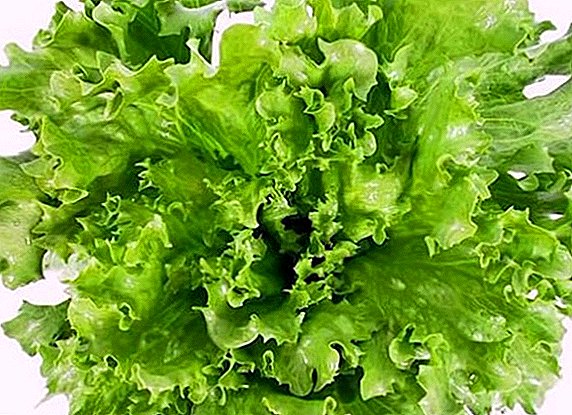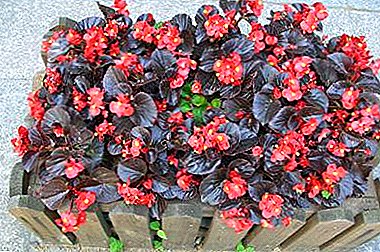
The ever-flowering begonia will be loved by all who plant it at least once for beauty, compactness, ease of care, and, of course, continuous flowering, pleasing with a riot of colors.
Unpretentious in the care and reproduction, ever flowering begonia, resistant to some adverse factors. Such a flower on the windowsill will delight even on the gloomiest day.
This article details the basic rules for the care of ever-flowering begonia at home and its planting, a description and a photo of the plant.
What does a plant prefer?
- Temperature and lighting.
The air temperature in summer and in winter should be 20-25 degrees Celsius. In the warm season it is not allowed to overheat the leaves and stems, and in cold weather the root system must be protected from overcooling. In order to bloom was year-round, the plant needs a light day of at least 16 hours. However, in the midst of a hot day you need to pritenyat begonia to avoid unpleasant consequences.
- Humidity.
The need for begonia ever flowering, high humidity due to its tropical origin. However, overdoing with abundant spraying is also impossible, it can harm the plant - this can be understood by the brown spots with which it will be covered in such a case. The optimal solution is to create an artificial source of moisture.
If there is no electric humidifier in the house that can be placed near the plant, then you can build a design that satisfies the need of the flower for moisture. On an empty pan, you must put a pot the size of a smaller one. Pour pebbles or expanded clay on the open areas of the pallet. On the pot you need to put a pot with begonia.
Regularly moistening the drainage layer, the water from which will evaporate near the plant, can satisfy the need for high humidity. If you do not provide this, then the decorative properties of the flower will go down - the tips of the leaves will dry out and curl. - A place.
Begonia is one of those flowers for which frequent changing of the pot is stressful and can be harmful. Therefore, you need to take a responsible approach to the choice of place and take into account the fact that begonia loves a lot of free space, and she needs space.
A photo
Here you can see the photos of ever flowering begonias:




Planting and transplanting
- Before planting it is important to choose the right container. It is worth considering that the roots of the plant develop on the surface, so it is better to take a shallow capacity, but wide. It must have a hole for drainage.
- Place a drainage layer of expanded clay or pebbles at the bottom of the tank.
- Pour the soil, lay the roots, sprinkle the remaining soil to the desired level.
- You can plant several plants in one container, the only condition is a distance of 10x10 cm from each other.
- Water regularly so that the entire soil is moistened.
Transplanting is a mandatory part of caring for the plant, because the root system of begonias is actively developing. Understand when transplantation is required, when the roots of the flower will be visible from the drainage hole. Choosing a new container, you need to remember the roots, which grow mainly in breadth.
Replanting the plant is recommended only in early spring, while there is no active growth.
Transplanting instructions:
- Carefully remove the plant from the old container.
- Clean the root system of the remnants of the earth.
- Prepare a weak solution of potassium permanganate, and lower the roots of the plant there for 30 minutes.
- Cut rotten roots, the rest of the rinse with settled water.
- Dried roots to plant according to the planting scheme described above.
- The first few days after transplantation requires frequent watering.
Mature plants that are beginning to lose their decorative effect, exposing the lower parts of the stems, there is no sense in replanting, transplantation will not return all the decorative effect of the flower.
Growing at home
- Watering and feeding.
Watering plants produced as needed. If the soil has dried out by 1.5 cm, then the flower needs watering. Water for this must be at room temperature and separated. Much more important for the good growth of the everglowing begonia is the constant maintenance of high humidity. The main goal of watering is to prevent the land and roots of the plant from drying out, but also to avoid stagnation of moisture in the soil.
Fertilizer is an important part of caring for evergonaceous begonia. During the period of formation of the ovaries, it is necessary to feed the plant with phosphate-potassium fertilizers, and further make special fertilizers for begonias liquid fertilizers for flowering crops.
- Pruning.
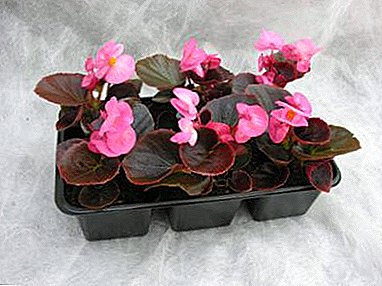 Although this species, as a rule, does not grow above 40 cm, pruning is sometimes necessary to give the flower a neat, rounded look. If the plant begins to grow ugly and unevenly, the upper stems can be left long, and those closer to the base, cut short. So begonias are rounded.
Although this species, as a rule, does not grow above 40 cm, pruning is sometimes necessary to give the flower a neat, rounded look. If the plant begins to grow ugly and unevenly, the upper stems can be left long, and those closer to the base, cut short. So begonias are rounded. - Winter care.
For continuous flowering in winter, the same lighting and temperature conditions should be observed as in the rest of the time. If this fails, then you need to give the plant a rest period: move the container with begonia to a cool place, but not less than 12 degrees Celsius - this is the lower threshold, the temperature can not survive the colder plant; reduce the number of waterings; reduce the amount of fertilizer.
To learn how to care for a particular variety of ever-flowering begonia - terry, as well as the rules for growing it at home and on the street, read in this article.
Care after purchase
It should be noted that the purchased plant must first adapt to the new conditions and only then it will be possible to make a transplant. Also, if the purchased plant blooms, then it cannot be transplanted; it is necessary to wait for it to fade.
When making a transplant, you need to be very careful with the roots, the slightest damage to which can lead to decay. You also need to carefully choose a suitable soil, you can both buy and prepare it yourself. It should be:
- 1/2 leaf land;
- 1 2 peat or humus.
Since the soil mixture turns out to be rather dense, a small amount of sand should be placed at the bottom of the tank. After transplantation, the plant needs proper and quality care.
Possible pests and diseases
- If the plant grows dull, loses its leaves, its growth slows down or stops altogether, it means that aphid and / or spider mite, which feed on begonia juice, have started on it.
To get rid of aphids, you can process the plant Aktellik three times at an interval of about 10 days. Derris or almost any other insectoacaricide will be suitable for the destruction of spider mites.
- In the case of the appearance of nematodes, begonia to save almost impossible, so you have to throw the plant.
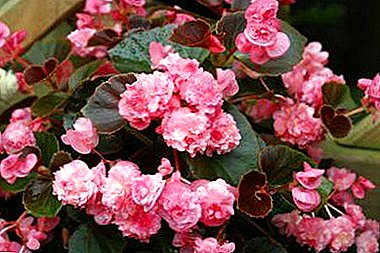 Ever flowering begonia at home can suffer from powdery mildew, black and gray rot. Fight against these phenomena can be a fungicide Quadris or Bordeaux liquid.
Ever flowering begonia at home can suffer from powdery mildew, black and gray rot. Fight against these phenomena can be a fungicide Quadris or Bordeaux liquid.- The appearance of yellow spots on the foliage signals the presence of diseases such as tomato spotting and cucumber mosaic. Treatment in such cases is impossible.
The painful appearance of the flower is not always caused by the influence of bacteria or pests.. This can lead to improper care. If the begonia begins to dry suddenly, but no other signs of the disease are observed, then, most likely, it suffers from a lack of moisture, you need to increase the watering.
However, it is important not to overdo it with watering - if watering is too frequent and abundant, the begonia will begin to rot.
Why does not bloom?
- Age.
Experienced growers say that begonia begins to blossom when the main stem has at least 5 rings. If the purchased plant is small, but blooms, then, most likely, a special growth stimulant was used, that is, the flowering was artificially induced and repeated only when the plant reaches the required for this age.
- Lighting.
If the flower is constantly in the shade, then this is another reason for the absence of flowers in begonias. It is necessary to increase the light day, but avoid direct sunlight.
- Humidity.
Dry air around everglowing begonias needs to be moistened. You can hang a wet towel on the radiator (pipe) or put a jar of water next to the flower.
- Temperature conditions.
The optimum temperature in the summer is 20–25 degrees, in the winter of 15. Sharp temperature fluctuations, drafts introduce the plant into a stressful state at which flowering is impossible. Room for a plant must be chosen with a constant microclimate.
- Lack of or excess fertilizer.
If vitamins are not enough, then you need to transplant in a new soil.
Fertilizing, you need to comply with the measure, otherwise you can burn the roots or redirect the power of the plant to grow lush foliage. - Pests.
Pests take away all the power plants to bloom. From time to time it is necessary to inspect the plants for their presence and, if necessary, treat them with special means.
It was an easy task to care for a flower that year-round delights the eye with its flowering. All you need is to pay a little attention and follow the rules.


 Although this species, as a rule, does not grow above 40 cm, pruning is sometimes necessary to give the flower a neat, rounded look. If the plant begins to grow ugly and unevenly, the upper stems can be left long, and those closer to the base, cut short. So begonias are rounded.
Although this species, as a rule, does not grow above 40 cm, pruning is sometimes necessary to give the flower a neat, rounded look. If the plant begins to grow ugly and unevenly, the upper stems can be left long, and those closer to the base, cut short. So begonias are rounded. Ever flowering begonia at home can suffer from powdery mildew, black and gray rot. Fight against these phenomena can be a fungicide Quadris or Bordeaux liquid.
Ever flowering begonia at home can suffer from powdery mildew, black and gray rot. Fight against these phenomena can be a fungicide Quadris or Bordeaux liquid.